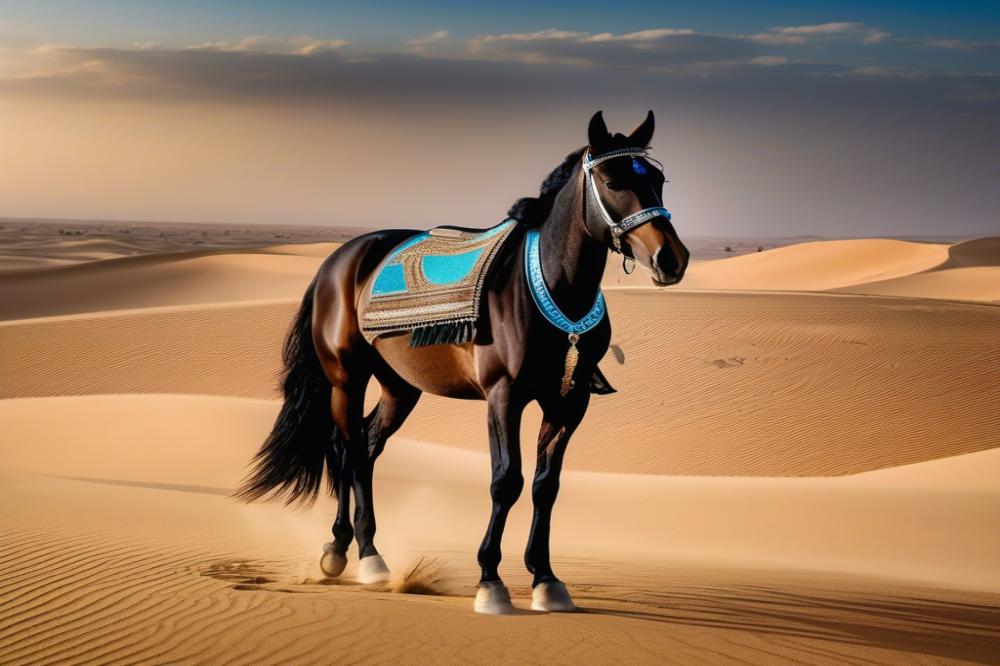horses in the rituals and ceremonies of the horses-in-the-traditional-folk-music-and-dance-of-andalusia”>Bedouins
The nomadic lifestyle of Bedouins has always been tied to the vast deserts of the Middle East. These people move in search of grazing grounds and water. Tradition dictates their way of life, passed down through generations. Their existence is not merely about survival; it is also about community, family, and heritage. Such a dynamic lifestyle relies heavily on adaptability and resilience.
In this context, horses hold great significance. They represent strength and status within the community. Over time, these animals became symbols of pride and identity. Horses serve as companions, helping with transportation and aiding in daily tasks. Their involvement in various aspects of life reflects their importance beyond mere utility.
Exploring the rituals and ceremonies surrounding horses reveals much about Bedouin culture. Important events, such as weddings and festivals, often feature these majestic creatures. They participate in celebrations, showcasing skills and bonding members of the community. This connection to horses helps illustrate the Bedouins’ deep respect for their traditions. Understanding these practices offers insight into values that shape their way of life.
Historical Context of Horses among the Bedouins
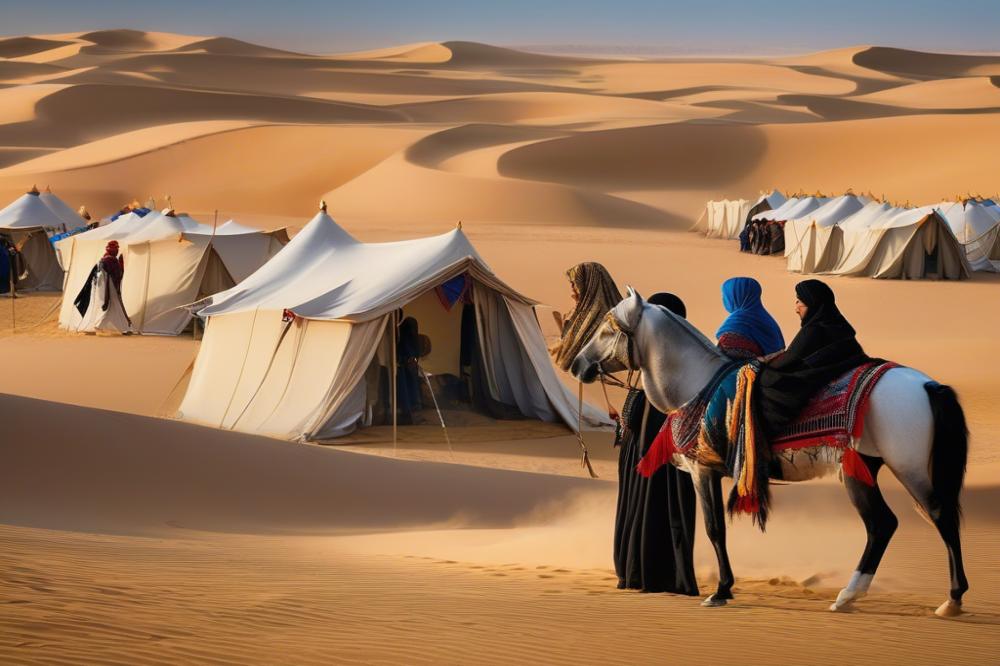
Origins of Arabian Horses and Their Role in Bedouin Heritage
Arabian horses are among the oldest breeds in the world. Their journey began thousands of years ago in the Arabian Peninsula. These magnificent creatures played a vital role in Bedouin life. Once valued for their endurance and beauty, they became companions to herders and warriors alike. Stories of their prowess spread across deserts, reflecting a deep connection between the Bedouins and their horses. This bond is not just about utility; it embraces a sense of pride and tradition. Many families have passed down tales of remarkable horses that served their ancestors.
Evolution of Equestrianism in Bedouin Society
Equestrian skills developed significantly over generations. Horses adapted to the harsh desert environment, becoming essential for survival. They provided means for transportation and assisted in herding livestock. Competitions arose, showcasing the strength and agility of these horses. Events often brought communities together, promoting a shared love for equestrian abilities. Training methods were tailored to meet the specific needs of each horse, emphasizing trust and partnership. As social structures changed, so did the role of horses in daily life. They evolved from being mere work animals to symbols of grace and elegance.
Horses as a Symbol of Wealth and Status
Ownership of horses indicated a person’s wealth and standing in society. Rare breeds commanded higher prices, making them desirable treasures. Displaying a magnificent horse at gatherings was a matter of pride. The best horses often came with elaborate saddles and ornate decorations, enhancing their beauty. Families competed to own the fastest or most beautiful horses, elevating their status among peers. A horse’s lineage also played a critical role; purebred horses were seen as prestigious. For many, these animals represented not just wealth but also honor and tradition.
Horses in Bedouin Rituals
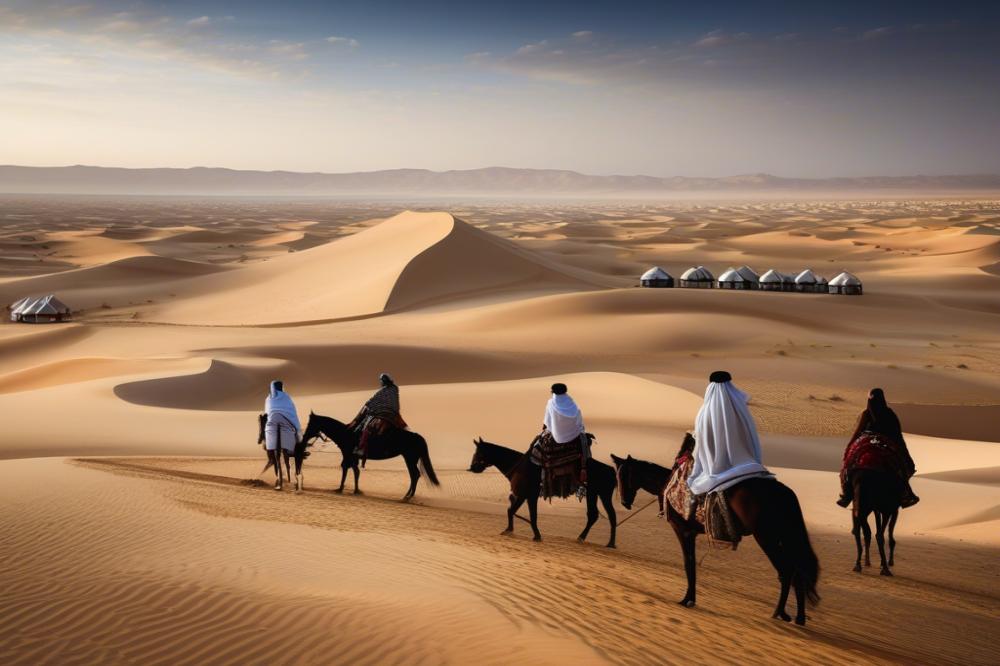
Role of Horses in Traditional Rites of Passage
Horses play an essential role in the rites of passage among desert dwellers. These animals are symbols of strength and honor. Young boys and girls often participate in events that signify their transition into adulthood. During these occasions, they showcase their skills with horses. This can include riding, racing, or other performances. Through these activities, the youth earn respect and recognition in their community. Each transition marks a new phase in their lives, and horses are always present to signify this change.
Involvement of Horses in Marriage Ceremonies
Marriage ceremonies in Bedouin culture are colorful and lively. Horses are not just decorative; they are central to the celebration. During a wedding, the groom may ride a beautifully adorned horse to arrive at the ceremony. This moment captures attention and admiration from guests. The bride often has her own horse as well, which enhances her elegance. In earlier times, families would present horses as part of the marriage agreement. Such gestures highlight the importance of these animals in expressing wealth and social status.
Ceremonial Displays During Community Events
Community events are filled with excitement and joy. Horses take part in races and exhibitions that entertain everyone. Skilled riders demonstrate their abilities, showcasing the deep bond between horse and rider. Traditional attire is worn, adding to the pageantry of the day. Attending these events strengthens social ties among families. These gatherings also foster a sense of identity within the group. A horse’s performance can bring pride to its owner, symbolizing honor and tradition. People gather to celebrate their shared heritage, and horses are a key part of the festivities.
cultural significance of Horses
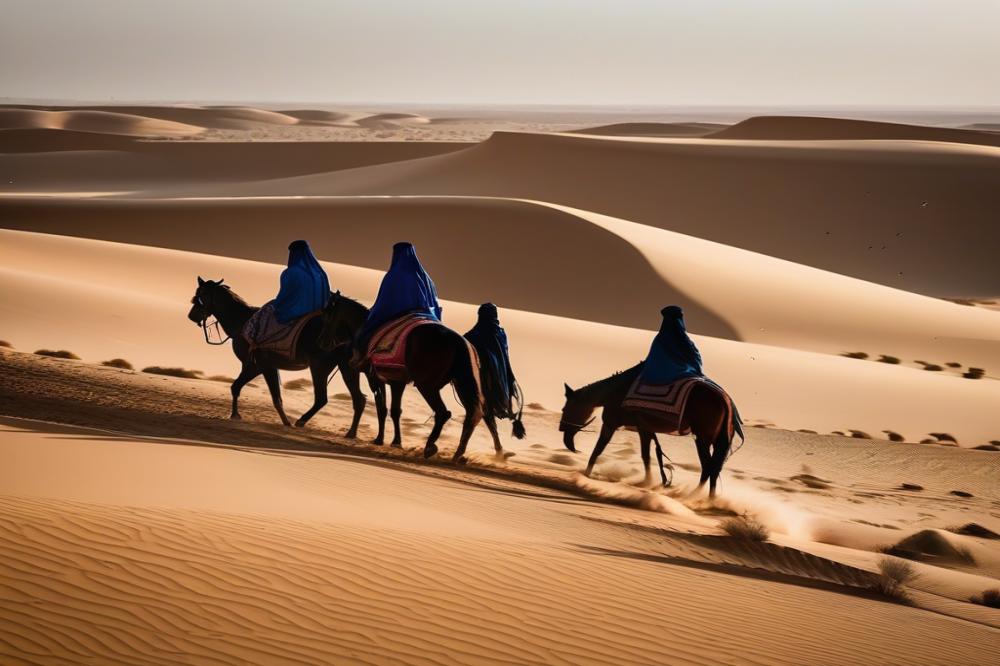
Horses hold a deep cultural meaning in the lives of the Bedouins. They represent more than just animals; they embody key values such as strength and bravery. In their folklore and mythology, these majestic creatures often emerge as symbols of nobility and pride.
Stories and legends weave together the bond between horses and the spirit of the people. Many tales highlight how a horse’s courage reflects the heart of its rider. The relationship between humans and horses goes beyond companionship; it symbolizes a shared journey through life’s challenges.
Bravery is a trait that both horses and their owners share. Riders admire their horses for their unwavering loyalty during dangerous times. This loyalty reinforces the idea that strength comes not only from physical prowess but also from deep connections.
Moreover, horses are woven into the very fabric of Bedouin identity. They are features of daily life, often associated with traditions and cultural practices. Events like weddings and celebrations use horses to honor the past and create lasting memories.
A horse’s beauty and grace elevate Bedouin values. These creatures often serve as a measure of wealth and status. Owning a fine horse signifies honor and respect within the community.
In various ceremonies, horses play pivotal roles. They symbolize the connection between the earthly realm and the spiritual world. Through rituals, people celebrate their respect for nature, where horses serve as vital links in the community’s story.
This deep-rooted connection with horses illustrates their significance in Bedouin life. Pride swells in the hearts of those who ride, as these animals carry not just riders, but the essence of their culture. The legacy of horses among the Bedouins remains a testament to the enduring bond between humans and nature.
Equestrianism and Traditions of the Bedouins
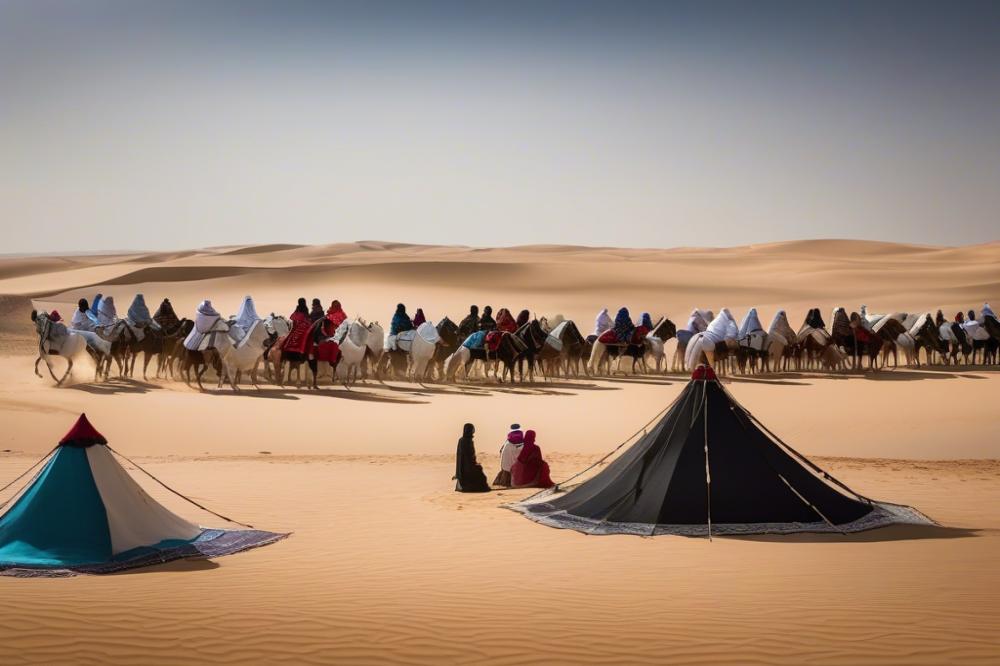
Training and care of Arabian horses reflect deep cultural values. Horse ownership signifies honor and respect. These animals are not just livestock; they are family. Bedouins learn how to raise these horses from an early age. Young people watch their elders to understand the nuances of care. Every aspect of training reflects their bond with these animals.
Training and Care of Arabian Horses in Bedouin Culture
Arabian horses require special attention to health and diet. Fresh water and quality feed are vital for their well-being. Each family often has its methods of grooming and training. Local herbs and practices are sometimes used to treat minor ailments. This knowledge is passed down through generations. Bedouins have a special connection with their horses that grows over time.
Traditional Horseback Riding Techniques and Their Teachings
Horseback riding among the Bedouins is an art. Riders often use specific postures and movements to communicate effectively with their horses. Skillful techniques are taught through practice and patience. Lessons include how to respond to the horse’s needs and feelings. Every ride reflects the rider’s understanding of the animal. Respect for the horse is fundamental in these teachings.
Celebration of Equestrian Sports as Communal Events
Equestrian sports serve as a focal point for community gatherings. Events like races and shows draw people from surrounding areas. They celebrate not only skill but also friendship and unity. Each contest becomes a spectacle filled with excitement and pride. The atmosphere is charged with energy as spectators cheer for their favorites. Prizes often include trophies, and each victory carries meaning.
Modern Influences and Adaptations
Contemporary perceptions of horses in Bedouin society
Many people today view horses as symbols of heritage and beauty. They represent strength and grace in modern Bedouin culture. These animals are often admired for their elegance. Horses also play a critical role in social events, showcasing pride. In local markets, one can see riders demonstrating their horses. This creates a vibrant atmosphere, linking the past with the present. While some urbanization has taken place, the bond remains strong. Riders still participate in traditional competitions and events that celebrate their skills. Communities cherish this connection to their roots.
Impact of modernization on traditional rituals and ceremonies
Modern life has brought changes to age-old customs. Many rituals that once depended on horses are now altered or less frequent. Transportation has shifted from horseback to vehicles. Some ceremonies that once celebrated equine prowess are becoming rare. However, some groups actively seek to retain their traditions. They incorporate horses into weddings and festivals. This adaptation helps keep the culture alive, although the form may change. Events still emphasize the horse’s importance, even amid modernization. It often features a blend of old and new practices.
Preservation of equestrian heritage in modern Bedouin communities
Efforts are underway to preserve equestrian history. Some communities establish clubs focused on horse training and care. Equestrian events are organized to highlight skills. Dedicated individuals work to pass knowledge to younger generations. Learning about traditional riding techniques is essential for this heritage. Through storytelling and hands-on experiences, culture thrives. These initiatives often include educating about the significance of horses in everyday life. Social gatherings promote awareness and appreciation for this rich heritage. The future of equestrian customs remains bright as the legacy continues to flourish.
Final Thoughts on Horses in Bedouin Culture
Horses hold a central place in the rituals and ceremonies of the Bedouin people. Their strength and beauty symbolize more than just transportation; they represent status, pride, and a deep connection to traditions that have persisted through generations. Each time a horse steps into a ceremonial setting, it carries with it the weight of history and cultural significance.
The role of these magnificent animals transcends mere practical utility. Many families use horses to mark significant life events, such as births and marriages. Their presence enhances celebrations and brings communities together. It’s a poignant reminder of how interconnected human and animal lives can be, especially in a culture that values loyalty and companionship.
As the world continues to change, the cultural significance of horses remains strong. Younger generations are discovering the importance of their heritage and how horses fit into that mosaic. Teaching these values to children ensures that the stories and traditions surrounding horses will not be lost to time.
It is crucial to appreciate and preserve equestrian traditions among the Bedouin communities. Their unique methods of training and caring for these animals should be recognized and valued. The bond between riders and their horses is an experience worth protecting for future generations. By honoring these traditions, we keep the spirit of the Bedouin alive and thriving.

